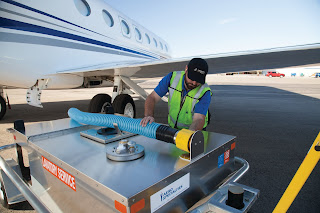Reducing Passenger Carrier Delays with Efficient Ground Service

In 2018 alone, the Federal Aviation Administration (FAA) estimated that passenger carrier delays cost $28billion between direct costs to airlines and passengers, indirect costs, and reduced demand. While some causes of delays may be unavoidable, such as weather, others can be mitigated or avoided entirely by improving the efficiency of airside ground crew operations. Whether than means investing in an upgraded aircraft pushback or tug tractor, or updating crew training and communication strategies, the payoff is clearly worth it. Aircraft Ground Power Unit Dependable Air Start Service Aircraft ground power units (GPUs) see a lot of use on the airside, as aircraft start service is a must for any airport or FBO. The GPUs can go through a lot of wear and tear, between daily use and varying weather conditions, so reliability is a critical factor in efficient aircraft start service. GPUs should also feature easy mobility and handling to help crews work more quickly. Inv





